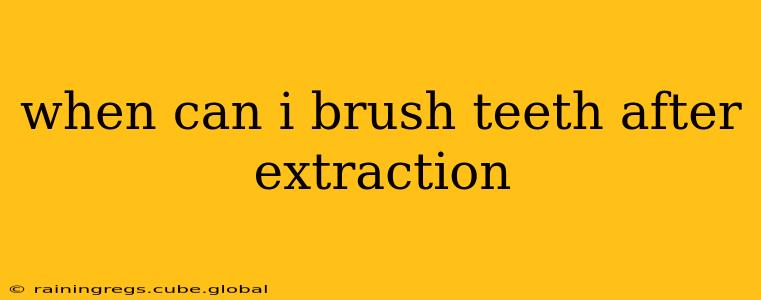When Can I Brush My Teeth After an Extraction?
Having a tooth extracted can be a bit unsettling, and knowing when it's safe to resume your normal oral hygiene routine is a common concern. The short answer is: you should wait until the bleeding has stopped and the blood clot has formed. This typically takes anywhere from 24 to 72 hours. However, rushing the process can lead to complications, so let's delve deeper into the specifics.
How Long Should I Wait Before Brushing After a Tooth Extraction?
The waiting period isn't just about waiting for the bleeding to stop; it's about protecting the crucial blood clot that forms in the extraction site. This clot is essential for healing and preventing a painful and potentially serious complication called dry socket.
Dry socket occurs when the blood clot dislodges prematurely, exposing the underlying bone and nerves. This is incredibly painful and can delay healing considerably. Therefore, gentle handling of the extraction site is crucial during the initial healing phase.
Generally, your dentist or oral surgeon will provide specific post-operative instructions, but a safe guideline is to wait at least 24 hours before gently brushing the areas of your mouth away from the extraction site. After 24-72 hours, you can cautiously resume brushing, but with some modifications.
What Kind of Brushing is Safe After an Extraction?
Once you're cleared to brush, employ extra gentleness around the extraction site. Use a soft-bristled toothbrush and avoid directly scrubbing the area. Instead, focus on brushing the surrounding teeth thoroughly.
Here's a recommended approach:
- Gentle Circular Motions: Use gentle circular motions around the extraction site, avoiding direct pressure.
- Soft-Bristled Brush: Opt for a soft-bristled toothbrush to minimize irritation.
- Avoid Vigorous Brushing: Resist the urge to scrub vigorously, especially near the extraction site.
- Rinse Gently: Gently rinse your mouth with salt water (1/2 teaspoon of salt dissolved in 8 ounces of warm water) several times a day. This helps keep the area clean and promotes healing.
Can I Use Mouthwash After a Tooth Extraction?
It's generally recommended to avoid using mouthwash, especially alcohol-based ones, for the first 24 to 72 hours after an extraction. Mouthwash can interfere with clot formation and irritate the healing socket. If your dentist recommends a specific mouthwash, use it as directed.
When Can I Floss After Tooth Extraction?
Similar to brushing, you should avoid flossing near the extraction site for at least 24 to 72 hours. Once cleared by your dentist, gently floss around the surrounding teeth, carefully avoiding the extraction site.
What if I Experience Pain or Swelling?
Pain and swelling are common after an extraction, but if you experience excessive pain, significant swelling, or any signs of infection (such as increased pain, pus, or fever), contact your dentist or oral surgeon immediately.
What Happens if the Blood Clot Dissolves?
As mentioned, the loss of the blood clot leads to dry socket (alveolar osteitis). This is a painful condition that requires professional attention. Symptoms include severe pain, a persistent bad taste in the mouth, and a visible empty socket. If you suspect you have a dry socket, contact your dentist or oral surgeon immediately. They may use medicated dressings to alleviate the pain and promote healing.
By following these guidelines and heeding your dentist’s specific instructions, you can ensure a smooth recovery and a healthy smile. Remember, patience and gentle care are key to successful healing after a tooth extraction.
